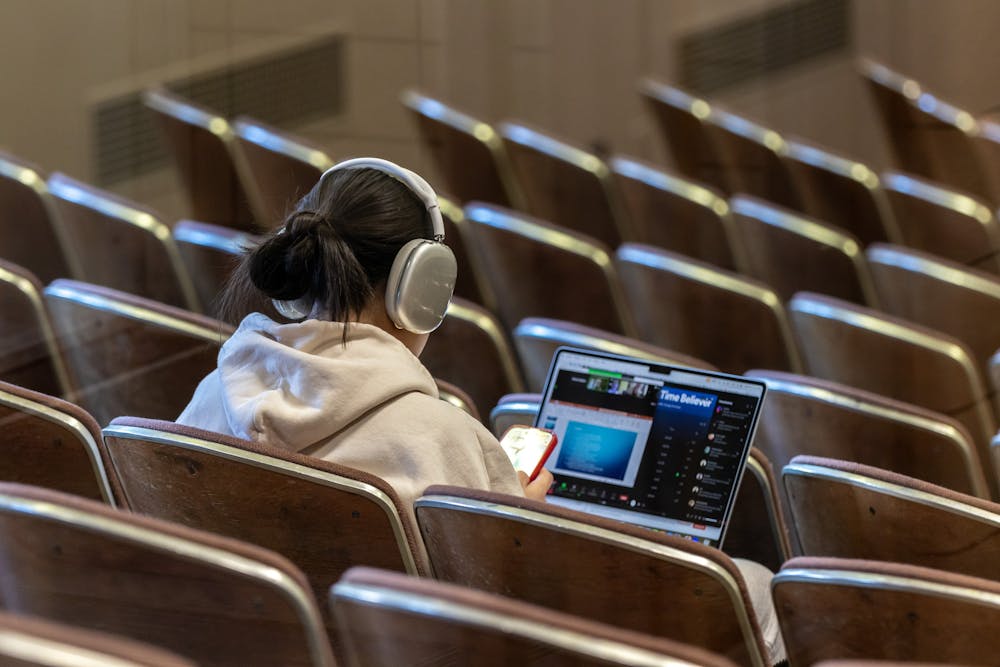With student participation in class falling after the COVID-19 lockdown, professors have discussed ways to keep both traditional and hybrid classes engaged.
According to a 2023 report from Wiley, an academic publishing company, two thirds of instructors said they struggle with keeping students engaged, and 55% of undergraduates have difficulty engaging in class.
This lack of interest is also present at Miami University, where students like Eli Locke, a first-year integrated science education major, spoke on how often they saw their classmates participate.
“Not too often,” Locke said. “They’re not excited about it.”
Locke also said he saw more students engage in his in-person classes than in his online ones.
However, despite this trend in disengagement, some professors find that divergent teaching styles help maintain students’ attention.
Jim Friedman, an associate professor of entrepreneurship, teaches small in-person courses and a large hybrid lecture. When his classes meet in person, Friedman employs a zero technology policy to keep the focus on the class discussion.
“There are no cell phones, there’s no computers. There are no tablets,” Friedman said, “because we are going to have a conversation.”
His Entrepreneurship Foundations class, ESP 101, had 370 students last semester. Because of the large class sizes, Friedman has taken a unique approach to teaching the material.
The class only meets in person twice a semester, and students are split into small groups on the weeks the class is online. They’re given a challenge they have to solve and submit, which Friedman says yields higher engagement rates.
“Nobody is standing in front of them telling them what they’re doing,” Friedman said. “I think of it as career preparation.”
Friedman isn’t the only one who thinks dividing the class is a good idea. Ann Haley MacKenzie, a science educator in the Department of Teaching, Curriculum, and Educational Inquiry, splits her in-person classes of 10-25 students into fourths.
Enjoy what you're reading?
Signup for our newsletter
MacKenzie described her teaching as very student-centered. Each group of students is given a different aspect of the daily lesson to focus on, which Mackenzie said she believed helped them internalize the material more.
“What I found is students need variety in one class to really get them engaged and to hold their interest,” MacKenzie said, “and to get them involved in different kinds of learning.”
Other professors may be able to employ strategies like this in their classrooms to keep students more engaged.




